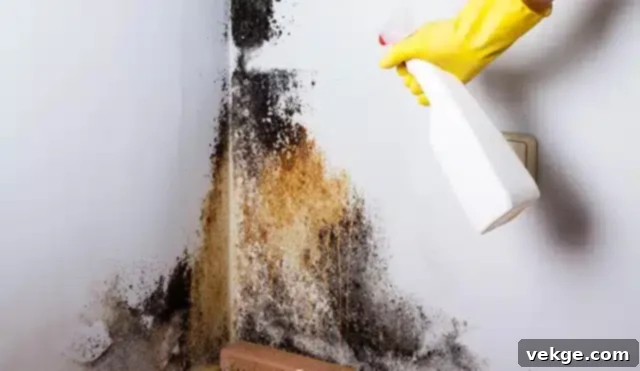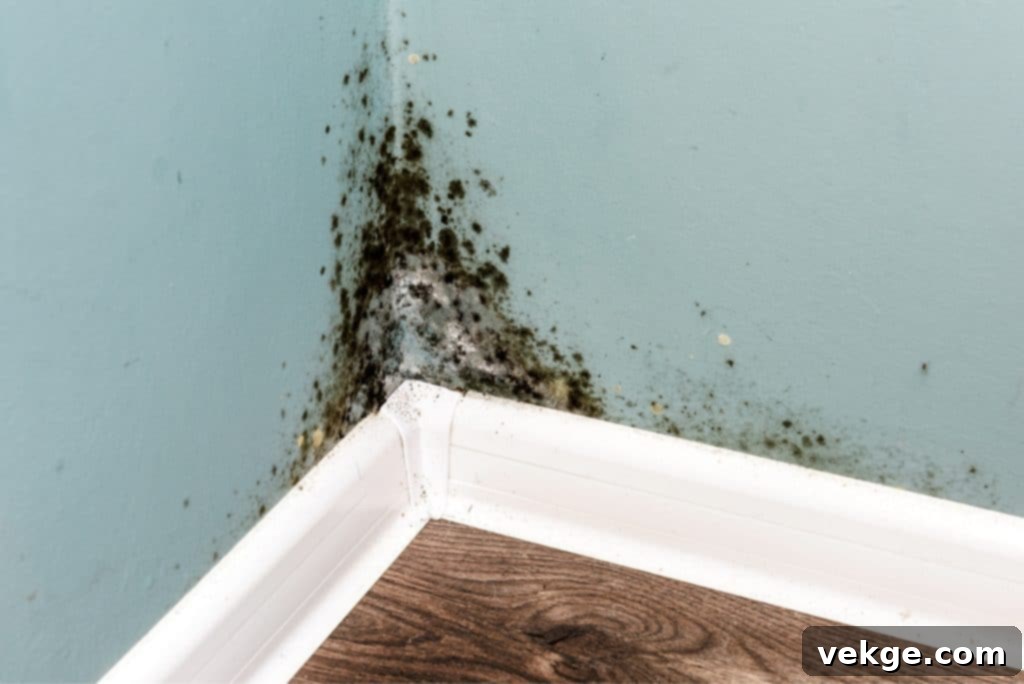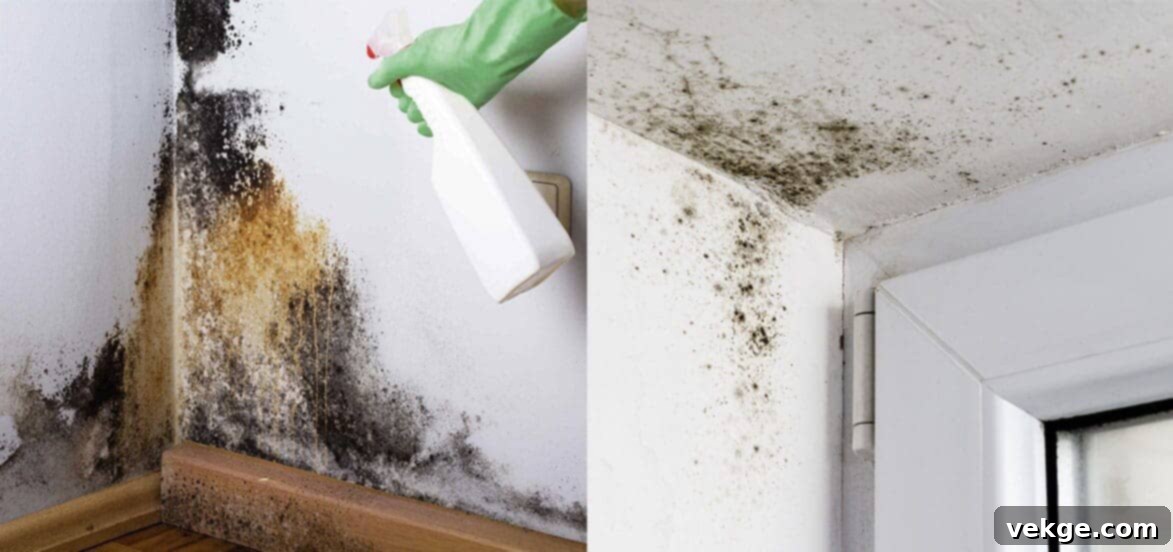Unveiling Hidden Dangers: Your Essential Guide to Mold & Asbestos During Home Renovations
Embarking on a home renovation project is an exciting journey, whether you’re envisioning a complete residential makeover, preparing a property for sale, or undertaking essential repairs and improvements. It’s a chance to breathe new life into your living space, enhance its aesthetics, and boost its functionality. However, beneath the surface of exciting new designs and structural upgrades, there can often be hidden challenges that, if not properly addressed, can derail your project, compromise your health, and impact your home’s long-term value. Among these unforeseen issues, mold removal and asbestos remediation stand out as critical concerns that every homeowner must be prepared to tackle.
The demolition phase of any renovation project is particularly revealing. As walls come down and old structures are exposed, a property’s hidden history often comes to light. This is frequently when homeowners uncover lurking hazards like mold and asbestos—harmful contaminants that can exist undetected for years within the fabric of your home. These issues not only pose significant health risks to occupants but can also lead to costly delays and complications in your renovation timeline if not identified and managed early.
Therefore, a proactive approach is paramount. Integrating professional asbestos inspection and expert mold removal in Toronto as preliminary steps in your renovation plan is not just a recommendation—it’s an imperative. Addressing these potential threats before construction truly begins ensures that your home renovation project proceeds seamlessly, safely, and without the unwelcome surprise of discovering widespread contamination mid-way through. This early intervention is key to protecting both your investment and the well-being of everyone in your household.
Comprehensive Mold Detection: Beyond the Visible Signs

While often, mold detection appears straightforward—manifesting as visible spotting, discoloration, or staining on surfaces—these superficial signs are frequently just the visible portion of a much larger, deeper infestation. Mold can insidiously spread deep within the structural elements of your property, hiding behind drywall, under flooring, or embedded within insulation. Relying solely on visible cues can lead to incomplete remediation, leaving a significant portion of the problem unaddressed and likely to recur.
To accurately assess and effectively tackle the full scope of a mold infestation, a professional and thorough inspection is indispensable. Scheduling a comprehensive inspection is a crucial preventative measure that can save homeowners significant expenses in the long run. By precisely identifying the extent and source of the mold outbreak, professional inspectors can guide the remediation process, preventing the need for costly recurring mold removal costs in the future. Experts utilize advanced tools such as moisture meters, thermal imaging cameras, and even air quality testing to detect hidden moisture sources and mold spores, ensuring no hidden corner is overlooked. This detailed assessment is the foundation for effective and lasting mold remediation, protecting both your health and your renovation investment.
Common Hotspots: Where Mold Hides During Renovations

Mold thrives in dark, damp, and undisturbed environments, often making its home in areas typically overlooked during routine home maintenance or standard inspections. During renovations, the act of disturbing these long-hidden spaces can inadvertently release dormant mold spores into the air, potentially exacerbating the problem and spreading contamination throughout the home. Being aware of these common mold locations is crucial for developing a targeted renovation strategy that includes comprehensive mold removal efforts.
- Behind Wallpaper: Wallpaper, while decorative, can ironically create an ideal, concealed breeding ground for mold. The adhesive used to secure wallpaper can trap moisture, and the impermeable nature of the wallpaper itself can restrict airflow to the wall surface. This combination fosters a warm, damp microclimate perfect for mold growth. When renovations involve stripping old wallpaper, homeowners are frequently met with the unpleasant surprise of extensive mold colonies flourishing on the underlying wall surfaces. Careful removal and professional treatment are essential to prevent cross-contamination.
- Under Carpets: Carpets and their associated padding are highly absorbent materials, making them particularly vulnerable to moisture retention from spills, leaks, or even high ambient humidity. This makes areas under carpets prime locations for mold development, especially in moisture-prone zones like basements, bathrooms, or ground-floor rooms. Lifting old, worn carpets during a renovation can reveal hidden mold growth on the subflooring or within the carpet padding itself. Effective remediation in these instances demands not only the complete removal and disposal of all affected flooring materials but also the thorough cleaning and treatment of the subfloor with specialized antimicrobial agents to inhibit any future growth.
- Inside Ventilation Ducts: Your home’s HVAC (Heating, Ventilation, and Air Conditioning) system is designed to circulate air, but if mold is present within the ductwork, it can inadvertently become a vector for spreading mold spores throughout every room. Condensation or minor leaks within the duct system can create the necessary moisture, leading to mold growth that is exceptionally difficult to detect due to its hidden nature. Renovations that involve inspecting, upgrading, or replacing HVAC systems offer a critical opportunity for professional cleaning and treatment of ventilation ducts. Engaging expert mold removal in Toronto ensures that your air circulation system is free from mold and other airborne contaminants, safeguarding your indoor air quality.
- Within Wall Cavities: Perhaps one of the most insidious hiding spots, wall cavities can conceal significant mold growth for years without any outward signs. Leaks originating from faulty plumbing, compromised roofs, or improperly sealed windows can introduce moisture into these enclosed spaces. Once moisture is present, mold can proliferate extensively behind drywall, plaster, or paneling. During the demolition or repair phases of a renovation, exposing these cavities often reveals advanced mold infestations, necessitating immediate and careful remediation. This swift action is vital to prevent the release and spread of spores throughout the rest of your home as renovation activities continue.
- Throughout Attics: Attics are particularly susceptible to mold growth due to their position at the uppermost part of the house. Here, warm, moist air rising from living spaces often meets cooler roof structures, leading to significant condensation. This constant moisture, combined with frequently inadequate ventilation, creates an ideal environment for mold to flourish, particularly on wooden rafters, sheathing, and insulation materials that readily absorb and retain moisture. An attic mold infestation can compromise the structural integrity of your roof, degrade insulation efficiency, and significantly impact your indoor air quality. Investing in the cost of mold removal for your attic is a crucial step in preventing further damage and ensuring the health of your entire home.
Understanding Triggers: Preventing New Mold Growth During Construction
Beyond addressing existing mold outbreaks, a critical aspect of any successful home renovation project involves implementing strategies to prevent new infestations from forming. The construction environment itself can inadvertently create conditions conducive to mold growth if proper precautions aren’t taken. If new mold outbreaks occur during your renovation, they can quickly compromise newly installed materials, damage structural integrity, and lead to significant delays and additional costs, undermining the very upgrades you’re working to achieve.

The single most common and potent trigger for mold outbreaks during home renovations is water damage. Incidents such as burst pipes, unexpected flooding, roof leaks, or even persistent high humidity can quickly saturate exposed cellulose materials—like wood framing, drywall, and insulation. Once these materials become wet, they provide an ideal food source for mold spores, leading to rapid and widespread growth within a matter of days. This is why managing moisture is the cornerstone of mold prevention.
Should you experience any water-related incidents—be it a major flood, a pipe burst, or even a persistent leak—it is absolutely imperative to contact professional water damage restoration in Toronto immediately. Prompt action is critical. Not only will rapid water extraction and drying significantly reduce the chances of requiring extensive mold removal services later, but it will also help prevent other costly and dangerous issues such as electrical hazards, structural damage, and the deterioration of new construction materials. By quickly mitigating water damage, you facilitate a smoother, safer, and ultimately more cost-effective renovation project, keeping your timeline and budget intact.
Proactive Measures: Effective Mold Prevention Strategies
While mold spores are a natural and ubiquitous part of our environment, making complete avoidance impossible, proactive and effective measures can significantly mitigate the risk of severe infestations within your home. The key to prevention lies primarily in moisture control, as mold requires water to grow and thrive. By controlling moisture, you control mold.
Restoration companies universally recommend that addressing any form of water damage or intrusion must be the immediate priority. Mold can begin to colonize and spread within 24-48 hours of water exposure, attracting lingering spores to damp surfaces. The longer moisture persists, the greater the extent and severity of the outbreak will be, leading to more complex and expensive remediation efforts.
Beyond immediate response to incidents, maintaining optimal indoor humidity levels is one of the most effective long-term strategies. Utilizing dehumidifiers in damp areas like basements and ensuring proper ventilation in bathrooms and kitchens can dramatically reduce moisture. Furthermore, it is crucial to keep all building materials dry during storage and installation. Protect lumber, drywall, and insulation from rain or excessive humidity on the job site. Regular inspections for leaks from plumbing, roofs, and windows, along with prompt repairs, are also essential. Improving attic ventilation and ensuring proper exterior drainage can divert water away from your foundation, preventing moisture intrusion.
If, despite your best efforts, you observe visible signs of mold growth or detect its characteristic musty odor, the most prudent course of action is to immediately book a professional inspection. Following the inspection, schedule remediation services with an IICRC-certified company if required. These professionals have the expertise, equipment, and protocols to safely and effectively remove mold, ensuring the long-term health and structural integrity of your home.
Protect Your Renovation Projects with Professional Restoration Services
Integrating professional mold removal and comprehensive asbestos inspection into the foundational stages of your Toronto home renovation project transcends mere best practice for health and safety; it stands as an absolutely essential step in guaranteeing the enduring success, structural integrity, and overall sustainability of your renovation investment. These preliminary assessments and interventions are not expenses, but rather critical investments that yield significant returns in peace of mind, property value, and occupant well-being.
By proactively addressing these potential health hazards and structural threats upfront, you empower yourself to proceed with your renovation with unparalleled confidence. Knowing that your home has been meticulously inspected and thoroughly remediated of hidden dangers means your renovated space will not only be aesthetically pleasing but also fundamentally safer, considerably healthier, and ultimately more enjoyable for you and your family for many years to come. Professional restoration services provide the expertise and certification necessary to ensure your renovation is built on a clean, safe, and solid foundation, protecting your family’s health and maximizing your home’s value.
